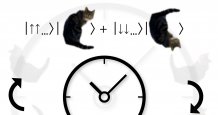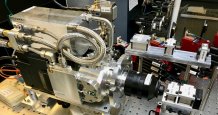News archive 2019

New technique to study molecules and materials on quantum simulator discovered
A new technique to study the properties of molecules and materials on a quantum simulator has been discovered.

Scientists crack 60-year-old mystery of Sun’s magnetic waves
A ground-breaking new discovery of why the Sun’s magnetic waves strengthen and grow as they emerge from its surface could help to solve the mystery of how the corona of the Sun maintains its multi-million degree temperatures.

New twist in quest to develop understanding of time crystalline behaviour
The quest to develop the understanding for time crystalline behaviour in quantum systems has taken a new, exciting twist.

Pupils given ‘out of this world’ virtual tour of exoplanets
Schoolchildren are being given an ‘out of this world’ opportunity to explore distant worlds discovered and studied by astronomers and climate scientists– all from the comfort of their classroom.

QuantIC wins £28m funding boost in ‘Next Leap Forward’
A ground-breaking research hub involving the University of Exeter, which is focused on the development of quantum-enhanced imaging systems, will be funded for five more years, it has been announced.

Exeter experts awarded prestigious Institute of Physics medals
Two physicists from the University of Exeter have received prestigious national awards in recognition of their long-standing, pioneering research.

Exeter scientist secures major international fellowship
Exeter scientist Jess Spake has been selected for a prestigious international fellowship.

Research paves the way for next generation of optical tweezers
Scientists have developed a pioneering new technique that could pave the way for the next generation of optical tweezers.

Pioneering infrared imager gives sharpest-ever view of stars and planet-forming discs
A pioneering new instrument could give astronomers a glimpse into how the solar system looked more than 4.5 billion years ago.
